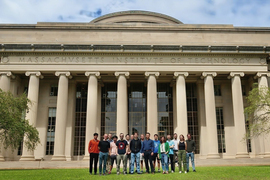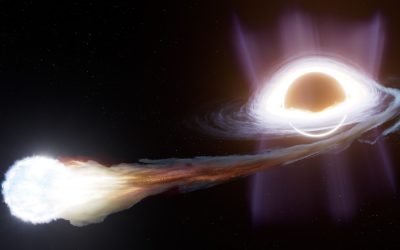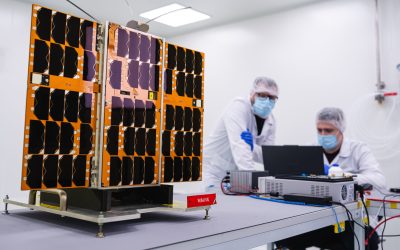Tokamaks are sophisticated devices engineered to contain and harness the immense energy typically found within the sun. These experimental fusion reactors deploy powerful magnetic fields to confine a plasma heated to temperatures far surpassing that of the solar core. Within this extreme state, the machines compel atomic nuclei to fuse, thereby liberating significant energy. Achieving safe and efficient operation of tokamaks could ultimately unlock a clean and virtually limitless source of fusion power.
Experimental tokamaks are currently operating worldwide, with additional facilities in various stages of development. Most of these are smaller-scale research machines, specifically engineered to investigate the intricate processes involved in generating and harnessing energy from plasma. A significant challenge for tokamak designers is devising a safe and reliable method to de-energize the circulating plasma current, which can reach speeds of up to 100 kilometers per second at temperatures exceeding 100 million degrees Celsius.
Carefully managed plasma “rampdowns” are essential when the superheated gas becomes unstable. These procedures are designed to reduce the plasma current, preventing further disruption and potential damage to a device’s interior. However, the rampdown process itself can occasionally trigger renewed plasma instability. In some fusion machines, these events have resulted in minor damage, specifically scrapes and scarring, to the tokamak’s internal components—damage that, despite its superficial nature, still demands considerable time and resources for repair.
Scientists at MIT have unveiled a novel method capable of predicting plasma behavior within a tokamak during its rampdown phase. This approach seamlessly blends machine-learning algorithms with a physics-based model of plasma dynamics. Its purpose is to simulate the plasma’s evolution and identify any instabilities that might emerge as the fusion fuel is gradually powered down and ultimately extinguished.
The model was rigorously trained and validated using empirical plasma data from an experimental tokamak located in Switzerland. Researchers observed that the method rapidly learned how plasma would respond to diverse rampdown strategies. Crucially, it achieved a high degree of accuracy despite utilizing a relatively modest dataset. This data efficiency is a significant breakthrough, given the high cost of tokamak experimental runs and the consequent scarcity of high-quality operational data.
A newly unveiled model, detailed this week by its developers in an open-access Nature Communications paper, presents a promising avenue for significantly improving the safety and reliability of future fusion power plants.
For fusion energy to achieve its potential as a practical power source, reliability is non-negotiable, states Allen Wang, lead author and a graduate student in aeronautics and astronautics at MIT’s Plasma Science and Fusion Center (PSFC), where he is also a member of the Disruption Group. Wang stresses that mastering plasma management is crucial for ensuring this essential consistency.
The study’s MIT co-authors include Cristina Rea, a Principal Research Scientist and leader of the Disruptions Group at the PSFC, alongside Oswin So, Charles Dawson, and Professor Chuchu Fan from the Laboratory for Information and Decision Systems (LIDS). They were joined by Mark (Dan) Boyer of Commonwealth Fusion Systems and additional collaborators from the Swiss Plasma Center in Switzerland.
A precarious equilibrium.
Developed in the Soviet Union during the 1950s, tokamaks are experimental devices central to the pursuit of nuclear fusion. The name “tokamak” is a Russian acronym, translating to “toroidal chamber with magnetic coils,” which accurately describes its fundamental design. These machines feature a distinctive donut-shaped, or toroidal, architecture. Within this chamber, powerful magnetic fields are employed to contain and accelerate a gas to such extreme temperatures and energies that it transforms into a plasma. In this superheated plasma, atomic nuclei can fuse together, thereby releasing energy.
Current tokamak experiments largely operate at a modest energy scale, with only a select few approaching the output and dimensions necessary for producing safe, reliable, and commercially viable energy. At this lower experimental level, plasma disruptions typically do not present a major operational concern. However, as fusion machines advance toward grid-scale capabilities, the precise control of significantly higher-energy plasmas across all operational phases will become paramount to ensuring the safe and efficient functioning of these advanced reactors.
Uncontrolled plasma terminations, even during power reduction, generate intense heat fluxes capable of severely damaging internal reactor walls, notes Wang. High-performance plasmas, in particular, often approach instability limits during rampdowns, creating a delicate balance. Consequently, a major focus for researchers is now on managing these instabilities to ensure routine, reliable, and safe plasma power-downs. Despite this critical need, studies on effective methods for achieving such controlled shutdowns remain relatively few.
A proactive strategy to mitigate heightened stress and foster a sense of stability.
A team led by Wang has successfully developed a predictive model to understand plasma behavior during the rampdown phase of a tokamak. This approach was favored over a simpler application of machine-learning tools, such as neural networks, for identifying plasma instabilities. Wang explained that relying solely on machine learning would demand an “ungodly amount of data” to effectively detect the very subtle and ephemeral shifts that characterize extremely high-temperature, high-energy plasmas.
Researchers developed an innovative approach, integrating a neural network with an established physics-based model designed to simulate plasma dynamics. This hybrid method, combining machine learning with physical simulation, demonstrated remarkable efficiency. It required only a few hundred low-performance pulses and a small handful of high-performance pulses to effectively train and validate the new model.
The data they used for the new study came from the TCV, the Swiss “variable configuration tokamak” operated by the Swiss Plasma Center at EPFL (the Swiss Federal Institute of Technology Lausanne). The TCV is a small experimental fusion experimental device that is used for research purposes, often as test bed for next-generation device solutions. Wang used the data from several hundred TCV plasma pulses that included properties of the plasma such as its temperature and energies during each pulse’s ramp-up, run, and ramp-down. He trained the new model on this data, then tested it and found it was able to accurately predict the plasma’s evolution given the initial conditions of a particular tokamak run.
The researchers also developed an algorithm to translate the model’s predictions into practical “trajectories,” or plasma-managing instructions that a tokamak controller can automatically carry out to for instance adjust the magnets or temperature maintain the plasma’s stability. They implemented the algorithm on several TCV runs and found that it produced trajectories that safely ramped down a plasma pulse, in some cases faster and without disruptions compared to runs without the new method.
“At some point the plasma will always go away, but we call it a disruption when the plasma goes away at high energy. Here, we ramped the energy down to nothing,” Wang notes. “We did it a number of times. And we did things much better across the board. So, we had statistical confidence that we made things better.”
The work was supported in part by Commonwealth Fusion Systems (CFS), an MIT spinout that intends to build the world’s first compact, grid-scale fusion power plant. The company is developing a demo tokamak, SPARC, designed to produce net-energy plasma, meaning that it should generate more energy than it takes to heat up the plasma. Wang and his colleagues are working with CFS on ways that the new prediction model and tools like it can better predict plasma behavior and prevent costly disruptions to enable safe and reliable fusion power.
“We’re trying to tackle the science questions to make fusion routinely useful,” Wang says. “What we’ve done here is the start of what is still a long journey. But I think we’ve made some nice progress.”
Additional support for the research came from the framework of the EUROfusion Consortium, via the Euratom Research and Training Program and funded by the Swiss State Secretariat for Education, Research, and Innovation.







